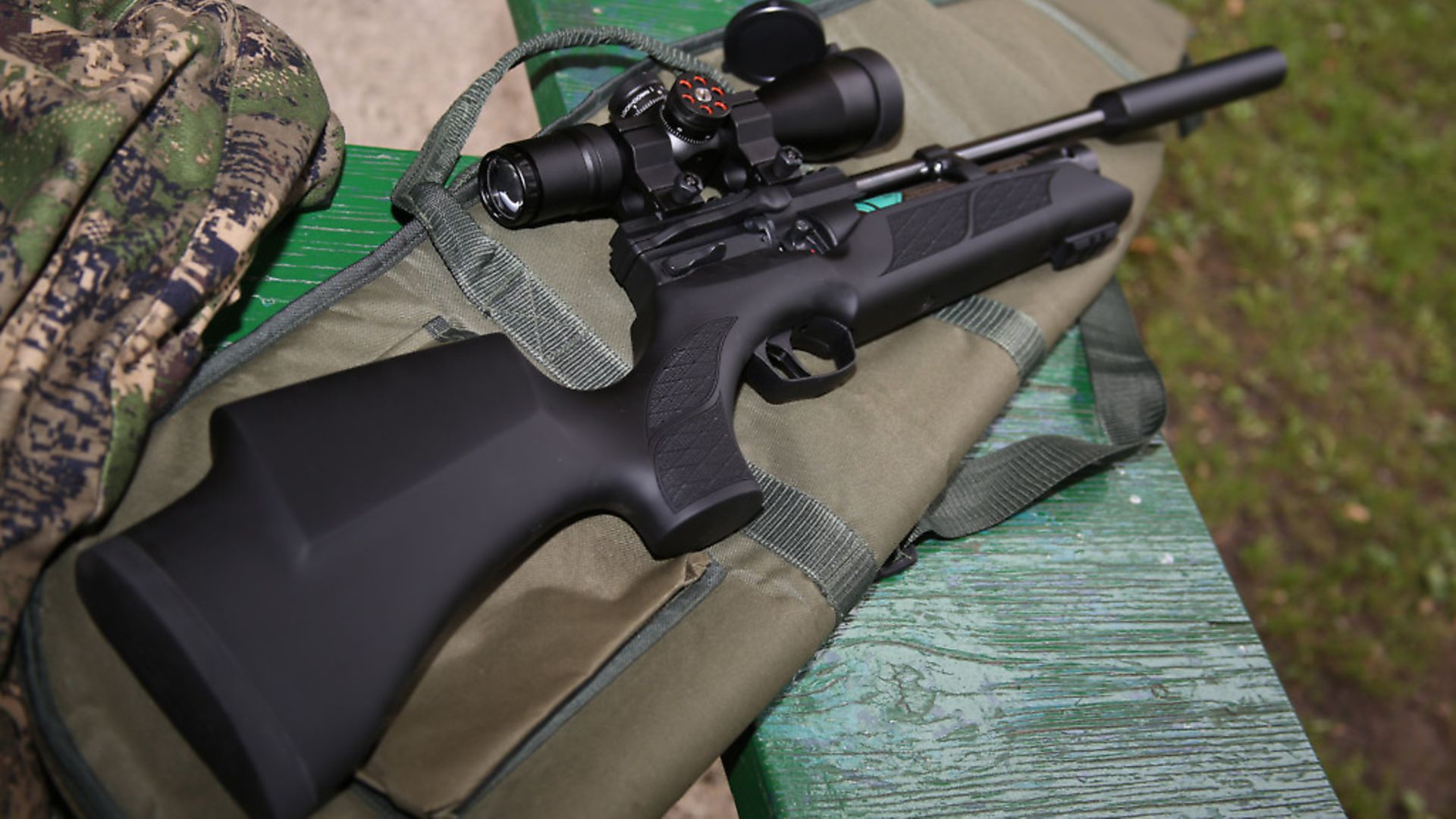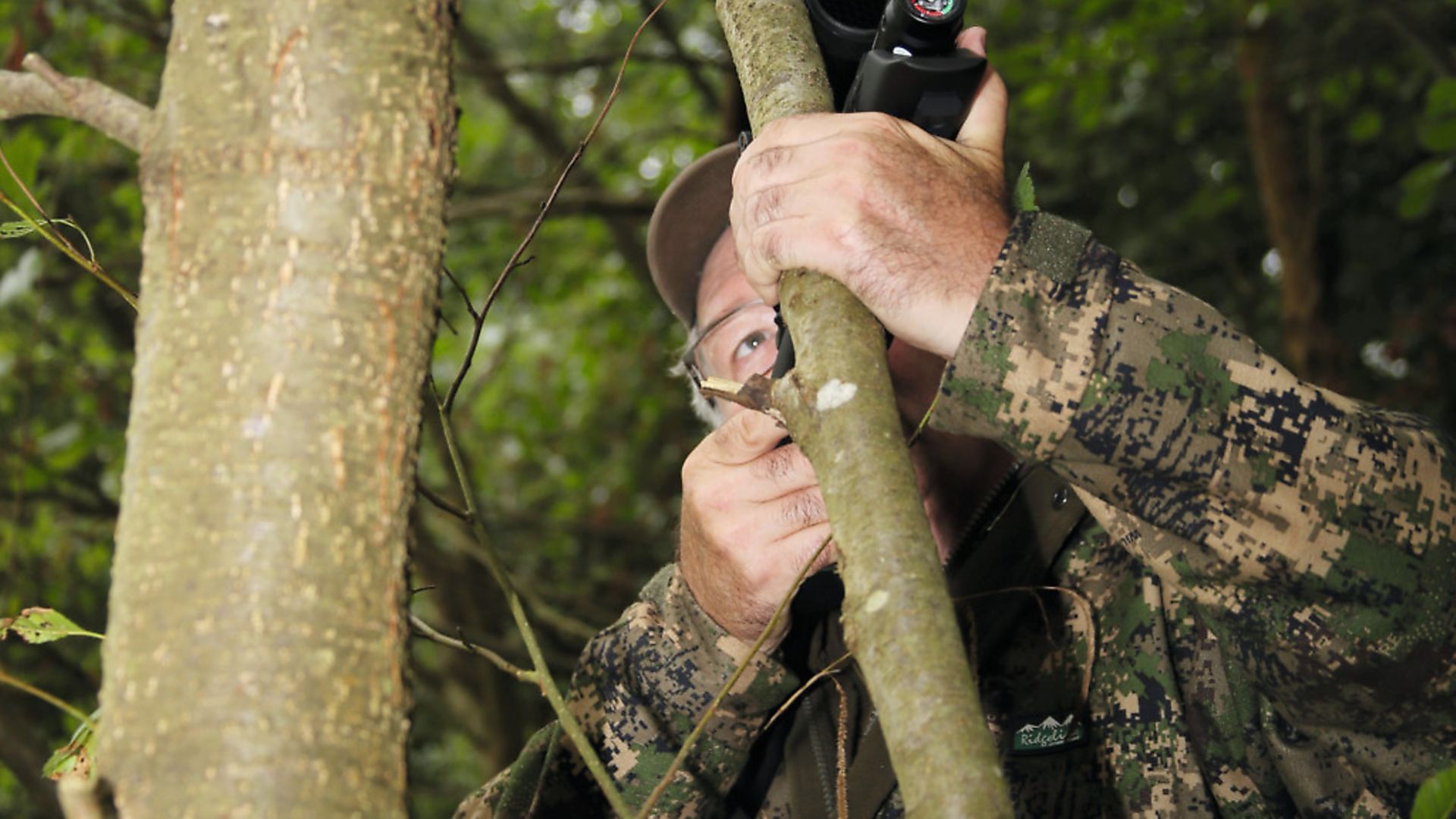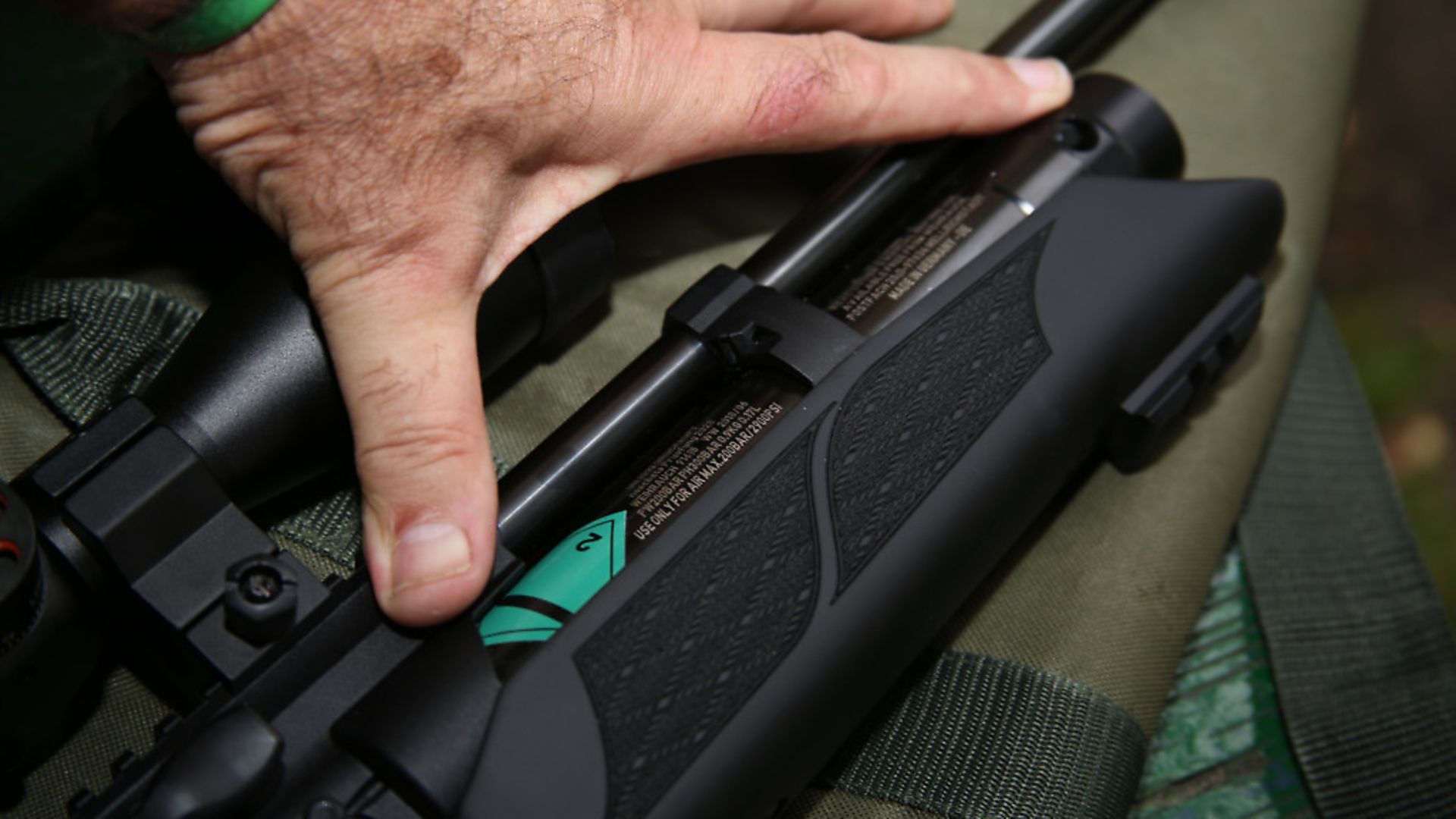The editor feels the benefit of the newly-abbreviated Weihrauch HW110 K
 credit: Archant
credit: Archant
This month’s follow-up test is quite possibly the easiest I’ll ever write. For once, nothing substantial has changed about the test rifle over the past month, apart from it impressing me, and others, more in the same ways it did when I first tested it. It’s a rare event, indeed, when first impressions round up a rifle’s positive features, but that’s exactly what’s happened with the Weihrauch HW110 K.
Small change – big difference
For those who weren’t glued to the editor’s test last month, I managed to get first official go of Weihrauch’s latest, Karbine version of its super-successful HW110 PCP. The HW110 K carries everything its slightly longer stablemate has, apart from 4 inches being lopped off the barrel, and the fore end and air reservoir being cut down to 9.5 and 9 inches respectively.
These changes still allow the 110 K to produce over 60 perfect shots in .177 and a reported 80-plus in .22 from each 200-bar charge, for a muzzle energy of 11.3 from the .177 test rifle. Plenty of output, then, all superbly suppressed by the supplied Weihrauch silencer, with the launch of every pellet authorised perfectly by the rifle’s truly excellent trigger. Add a finish upgrade on the now-black safety catch and magazine release lever, and you have a selection of small changes combining to make a significant difference. Let’s see how that difference works out in the real world.
 credit: Archant
credit: Archant
My choice
As stated in last month’s test, I’m a huge fan of the original HW110. I’ve used one regularly since its launch and it’s helped me put countless head of vermin in the bag, in all weathers, and applications, from hide-shooting, to stalking, through lamping sessions and a hundred enjoyable mooch-arounds, just seeing what’s about on my shoots. I had that rifle serviced earlier this year and it hasn’t missed a beat. Yet, if I had the choice between the standard HW110 and the K, I’d go for the Karbine, and here’s why.
More handy
In simple terms, the new HW110 K is more handy. To me and my shooting, that translates as being easier to use from a vehicle, in a hide, in a barn, in dense cover, and in any situation where space is at a premium. Now, before the traditionalists start snarling at me for making way too big a deal out of a slightly shorter rifle, please allow me to qualify my preference.
 credit: Archant
credit: Archant
Performance first, last and always
First, if shortening the HW110 reduced its performance in any way, I’d stick with the standard rifle every time. No change to a rifle’s format, whatever that change may be, should reduce a rifle’s effectiveness in any way. I’m talking about the rifle’s downrange accuracy, its overall balance and handling, trigger function, and anything else which genuinely affects that rifle’s ability to do the job for which it was designed.
Thus, I checked and re-checked that the new HW110 K could match its standard-sized stablemate in every meaningful department before I even considered which one I’d pick over the other. For the record, I don’t consider the HW110 K’s slight reduction in shots per charge as significant, because it produces at least enough shots to get me four times as many rabbits as I can carry, and if I’m likely to need more, I’ll take a portable air tank with me.
 credit: Archant
credit: Archant
Less isn’t less
In every department, the HW110 K matches the high standards of the standard rifle; it’s just shorter, and therefore slightly more convenient to use in confined spaces. That said, I don’t recall too many times when the standard 110 was awkward to use, save a couple of times when I was shooting from a 4 x 4 and the rabbit was directly ahead of me. My point is, if a shorter, slightly more convenient rifle does everything I need, why wouldn’t I choose it over a longer one? Actually, there’s only one reason, and that concerns balance and stability.
A question of balance
As I mentioned, if the HW110 K’s handling on aim was even slightly compromised, compared to the standard rifle, I’d stick with the longer gun. Knowing what I previously used performed better in any way that matters, would at the very least mess with my head and offer accommodation to the evil maggot of doubt. Once installed, that maggot will wriggle when I least need a reminder of my compromise, and there goes confidence.
The simple message
The message here couldn’t be simpler; before committing to any new rifle, make absolutely certain it really is an upgrade from what you have. I believe the new Weihrauch HW110 K is just that, and as such it will help my vermin control efforts even more than its bigger brother already has.
I’ll leave you with a recommendation; if it’s at all possible – even if you have to set aside a whole day to do this – get yourself to an outlet where both versions of the HW110 can be handled, and preferably shot. Judge them clinically and with total honesty, on the basis of what each could bring to your own shooting. Don’t go for the ‘K’ because it’s new. Assess it on a performance-only basis, and you might agree with me, or you might not. Whichever HW110 you choose won’t leave you short-changed, I assure you of that.
Specification
Model: HW110 K
Country of origin: Germany
Type: Pre-charged, multi-shot sporter
Calibre: .22, .177
Cocking: Sidelever
Loading: Via removable, rotary 10-shot magazine
Trigger: 2-stage, adjustable
Stock type: Ambidextrous, soft touch hardwood
Weight: 3.6kg (7lbs 9oz)
Length: 876mm (34.5ins)
Barrel: 310mm (12.2ins)
Fill pressure: 200 bar)
Shots per charge: 60-plus in .177, 70-plus in .22
Variation over 50 shots: 12 fps for .177 on test
Average energy: 11.3 ft.lbs.
Contact: Hull Cartridge on 01482 342 571
__________________________________________________
See Terry Doe’s first test here.
Read Phill Price’s review of the Weihrauch HW110 K here.